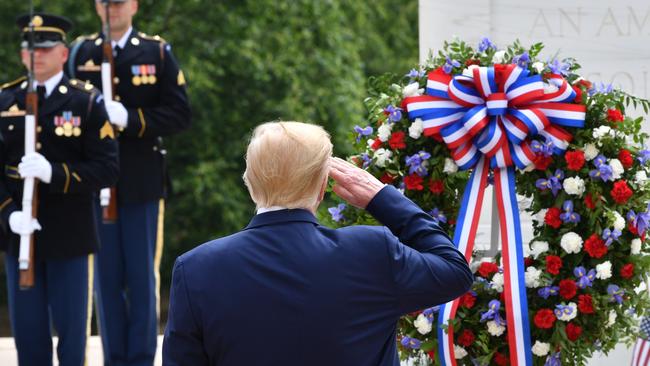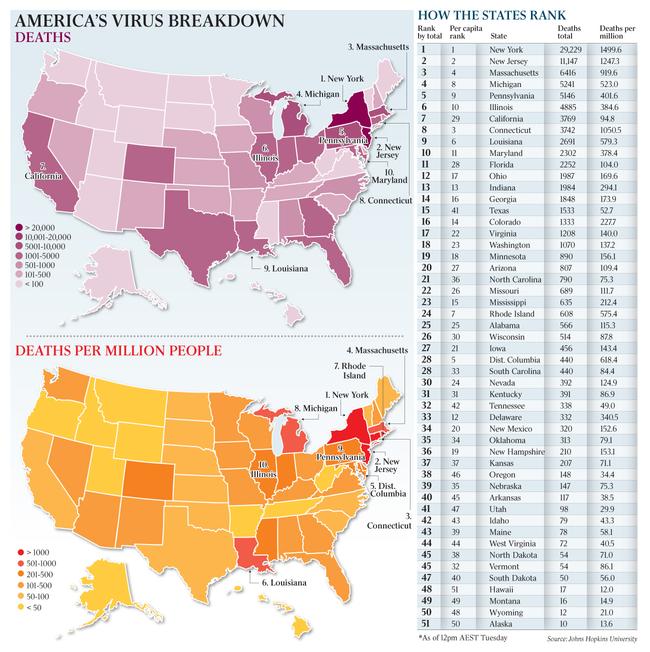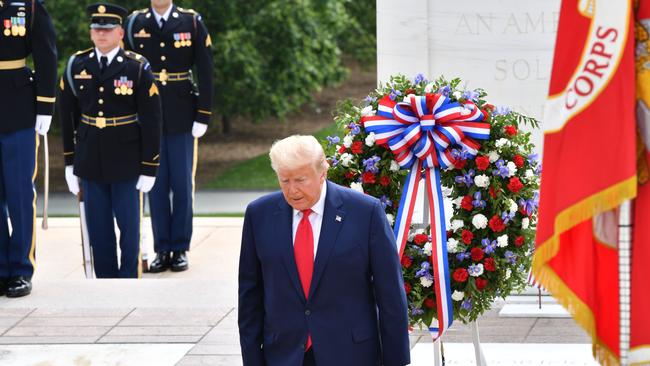
It is the entire population of Bundaberg in Queensland or the twin cities of Albury and Wodonga on the NSW-Victoria border. This is what America has lost as it prepares to mark its 100,000th death from coronavirus on Wednesday or Thursday.
No one will know the name of the 100,000th victim. With an average of more than 1300 people still dying each day, almost one for each minute, there is no time to learn the order of America’s dead. Could it be someone notable, like Lila Fenwick, the first black female graduate of Harvard Law school who recently succumbed to the virus? Or will it be a homeless person, like those homeless who died from the virus in New York and were buried in a mass grave?
Or could it be someone like Wogene Debele, a 43-year-old mother of three children who attend a school up the road from our home in Washington DC and who died of COVID-19 complications during childbirth before she could hold her newborn baby. She was the second mother to die at the school.
Or perhaps it will be someone in one of the many ambulances that pass our home, sirens blaring, taking another victim to hospital in the nation’s capital where the rate of infection is still so high that the members of the House of Representatives won’t come back to the congress.
But the odds suggest that the 100,000th victim, whoever they are, is more likely to be black or Hispanic, poorer than average and perhaps forced back to work by economic circumstance before it was safe to do so.
And yet these 100,000 dead are just a part of the true toll of this pandemic.

Donald Trump, in his dark dystopian inauguration speech, spoke of the need to end what he called “American carnage”, depicting a country where closed factories were “scattered like tombstones across the landscape”. The virus has ensured that those closed-up factories have now been joined by retail stores, restaurants and businesses large and small, more than 100,000 of which will not recover. This virus has swallowed not just lives but a generation of livelihoods, throwing more than 36.5 million people out of work in numbers not seen since the Great Depression.
In doing so, it has laid bare America’s racial and economic inequality, the lack of a safety net for workers and the flaws of a fragmented, privatised health system. All of these issues existed before the virus, but have been magnified by it.
Those aspects of the US that make it so attractive in normal times — its independent, freewheeling, freedom-loving ethos — have proved a liability in a pandemic.
The 50 US states have each gone their own way in dealing with the virus, like a weakly stitched patchwork quilt moving in different directions. There has been little co-ordinated federal control over them from the White House. Trump has not been the strong wartime leader he promised to be. He has exerted scant federal control over the pandemic, fatally misreading its early spread, baulking at basic measures such as a national testing regime and frequently speaking gibberish about false remedies.

Some say the absolute US death toll is not so bad because a handful of European countries have a higher per-capita death toll. But the psychological impact of 100,000 deaths has been profound in the US. This is the world’s richest and most powerful country with a deep belief in American exceptionalism.
There has been dismay that the virus could cut such a swath of death across the world’s superpower, delivering the Third World scenes that we saw in New York, with piles of bodies dumped into refrigerated trucks.
With the virus still killing so many each day, will Americans go back to work and play as shops and workplaces tentatively reopen?
It will take a while. In Maryland’s historic waterfront town of Annapolis, an hour from Washington, the streets would normally be overflowing with tourists on this Memorial Day holiday. Instead, the streets were mostly empty. Shops were reopened but no one was inside.
The owner of the ice-cream shop told me he would normally have lines of people flowing into the street, but on this day I was the only customer.
Instead, the only long lines you see in the US today are people waiting to sign up for unemployment benefits or to receive food parcels or to be tested for the virus.
On the drive back to Washington, there were a new breed of beggars at the traffic lights — mothers and fathers, holding up signs about losing their job and needing to pay their rent.
From the White House, where flags are flying at half mast to honour coronavirus victims, Trump tweeted about making America great again, saying infections and deaths were falling and that America’s economy would bounce back soon. But 100,000 Americans who had never heard of this virus four months ago are now gone, with countless more yet to die. Even if Trump is right about the economy bouncing back, the America we knew will take so much longer to recover.
Cameron Stewart is also US contributor for Sky News Australia




One hundred thousand people. That is the MCG on grand final day — that wondrous sea of humanity stretching from the Great Southern Stand to the Members Reserve.